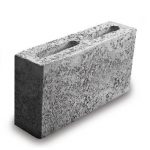What are dropped kerbs ?
A dropped kerb, also known as a lowered kerb or curb cut, refers to a section of a sidewalk or pavement where the kerb is lowered to the level of the road surface. This modification allows for a smooth transition between the road and the pedestrian walkway, facilitating accessibility for individuals with mobility aids such as wheelchairs or prams. Dropped kerbs are typically installed to improve pedestrian access and to comply with accessibility standards.
Is It Illegal to Park Next to a Dropped Kerb?
Parking next to a dropped kerb is often subject to specific regulations and local traffic laws. In many places, it is illegal to park in front of or obstruct a dropped kerb. This restriction is in place to ensure that individuals who rely on the lowered kerb for accessibility have unobstructed paths to cross the road safely. Blocking a dropped kerb can result in fines or the vehicle being towed, as it hinders the intended purpose of the lowered kerb.
What is the Width of a Dropped Kerb?
The width of a dropped kerb can vary based on local
regulations and the specific requirements of the installation. Generally, a standard dropped kerb is designed to be wide enough to accommodate the smooth transition between the road and the pavement. The typical width may range from 1.8 to 2.4 meters, but local authorities may have specific guidelines in place.
It’s crucial for property owners and contractors to adhere to local regulations when installing dropped kerbs. This includes obtaining the necessary permits and ensuring that the dimensions of the lowered kerb comply with local standards. Local authorities may specify the acceptable width and design to ensure proper accessibility and compliance with safety regulations.
Importance of Dropped Kerbs:
- Accessibility: The primary importance of dropped kerbs lies in improving accessibility for individuals with mobility challenges, such as those using wheelchairs, prams, or mobility aids. The lowered kerb allows for a smooth transition between the road and the pavement, enabling easy movement for pedestrians with diverse needs.
- Safety for Pedestrians: Dropped kerbs contribute to pedestrian safety by providing designated crossing points. They allow pedestrians to navigate roadways more safely, especially at intersections and crossings, reducing the risk of accidents.
- Compliance with Accessibility Standards: Dropped kerbs are often installed to comply with accessibility standards and regulations. Many countries and municipalities have guidelines in place to ensure that public spaces are inclusive and accessible to everyone, including those with disabilities.
- Convenience for Parents and Caregivers: Parents pushing strollers or prams also benefit from dropped kerbs, as they provide a convenient and obstacle-free transition between the road and the pavement, making it easier to navigate urban environments.
How to identify quality dropped kerbs:
Check Regulatory Compliance:
- Verify that the dropped kerb complies with local accessibility standards and regulations. This includes dimensions, slope, and design specifications set by municipal authorities.
Examine Material Quality:
- Assess the materials used in the construction of the dropped kerb. High-quality materials such as durable concrete or high-density polyethylene (HDPE) contribute to the longevity and effectiveness of the infrastructure.
Evaluate Smooth Transition:
- Walk or wheel across the dropped kerb to ensure a smooth and even transition between the road and the pavement. Any abrupt changes in surface levels may pose challenges for pedestrians, especially those using mobility aids.
Inspect Visual Markings:
- Look for clear visual markings on the dropped kerb. Contrast in color or tactile indicators can assist individuals with visual impairments in identifying the transition point between the road and the pavement.
Assess Installation Quality:
- Examine the overall installation of the dropped kerb. Professional installation following industry best practices and local guidelines is crucial for its proper functionality and longevity.
Check for Even Surface:
- Ensure that the surface of the dropped kerb is even and free of irregularities. An uneven surface may cause difficulties for pedestrians and individuals using mobility aids, compromising safety and accessibility.
Review User Feedback:
- Seek feedback from pedestrians, especially those with mobility challenges, who have used the dropped kerb. Positive feedback indicates that the infrastructure is effective in meeting the needs of the community.
Inspect for Regular Maintenance:
- Assess whether the dropped kerb is well-maintained. Regular maintenance is essential to ensure that the infrastructure continues to serve its purpose and remains in good condition over time.
Verify Width and Slope:
- Check that the width and slope of the dropped kerb align with regulatory standards. The dimensions should facilitate easy access for individuals with various mobility aids and ensure a safe transition.
Consider Surrounding Infrastructure:
- Evaluate the overall urban design and surrounding infrastructure. Quality dropped kerbs should seamlessly integrate into the surrounding environment, contributing to an inclusive and accessible urban landscape.
Ensure Adequate Drainage:
- Confirm that the dropped kerb incorporates proper drainage solutions to prevent water accumulation. Adequate drainage helps maintain the integrity of the infrastructure and prevents safety hazards.
By following these steps, municipalities, contractors, and property owners can effectively identify and ensure the quality of dropped kerbs, contributing to a safer, more accessible, and inclusive urban environment. Regular assessments and adherence to standards play a crucial role in maintaining the functionality and longevity of these essential accessibility features.




